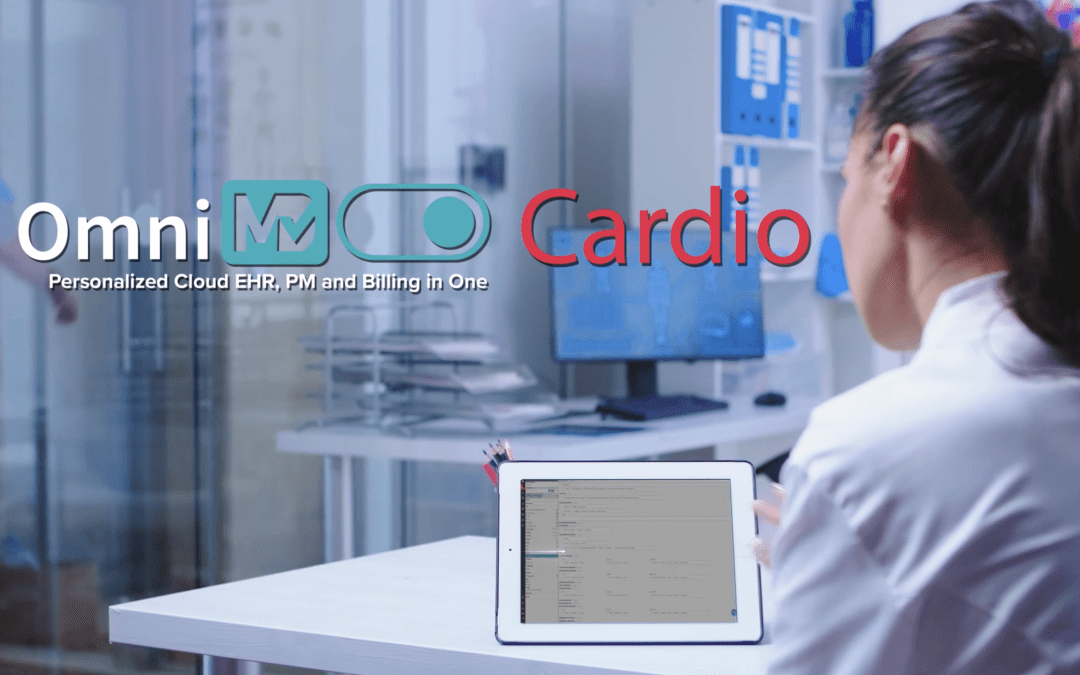


How to Use Modifiers 59, 25, 91
How to Use Modifiers 59, 25, 91
If you run a healthcare organization from a small physician’s office to a large hospital, your billing department uses codes to document procedures, medication and techniques used to treat clients. Entering the wrong code can result in improper billing and claims denials. Even if you get it right, the codes themselves often don’t accurately reflect the level of care provided.
Medical codes transform services, procedures and equipment into a universally understood language. However, your billing clerk may need to include more information to ensure that your organization receives the proper compensation. In addition, modifiers help clarify the services provided to insurance companies and billing personnel.
A medical modifier consists of two numbers or letters added to CPT or HCPCS Level II codes. Modifiers provide essential information about the service or procedure without impacting the main code. This blog provides guidance on using modifiers 59, 25 and 91.
When Should You Use Modifiers?
Tack on a modifier to the appropriate CPT code when you need a better description of services provided to clients. It’s important to avoid adding modifiers merely to increase reimbursement. You also cannot use modifiers to bill for procedures bundled with other services.
Working with modifiers requires care and due diligence. The descriptions aren’t always as clear as you might hope. Also, using the wrong modifier can result in suspicion or claim denials on the part of an insurer.
However, modifiers are critical to proper billing for your organization’s products and services. They further clarify a CPT code to document important information. These supplemental descriptions paint a more detailed story regarding services. In this blog, we’re concentrating on three of the most commonly miscoded ones.
CPT modifier 59: Distinct Procedural Service
Medical practitioners use modifier 59 to distinguish distinct procedural services. This commonly misused modifier indicates multiple procedures on different parts of the body during a single visit. Unfortunately, coders often use it to separate services bundled in another code. When used to prevent bundling and increase the total bill, adding modifier 59 becomes part of fraudulent billing practices.
Coders should also avoid using modifier 59 to bypass controls on the insurer’s claims processing system. Therefore, it’s important to use 59 only when there’s no more appropriate code to describe multiple procedures.
Example:
- A dermatologist performs a Photo Dynamic Therapy session on a patient’s scalp and face.
- Then, the machine is used to treat other parts of the body.
- The coder enters 9656796567 – 59 into the claim system.
- Modifier 59 indicates the second procedure, which required new positioning on a unique body region.
This is a valid use of modifier 59.
Modifier 25: separately Identifiable Evaluation and Management
Modifier 25 is a separately identifiable evaluation. Further, it’s performed by the same doctor or caregiver on the same day. Therefore, medical professionals can use modifier 25 to amend applicable CPT codes when the patient’s condition requires multiple evaluation and management (E/M) services.
Avoid using modifier 25 in the following circumstances:
Avoid using the 25 modifier to bill for postoperative E/M related to a prior surgery.
- Don’t add modifier 25 for an E/M service not followed by a procedure.
- Instruct coders not to append 25 for minimal same-day procedures unless you can show the service was “significant, separately identifiable.”
Example:
- A patient attends a cardiac appointment complaining of chest pain while exercising. The patient is hypertensive and has high cholesterol. The cardiologist orders a stress test on the same day.
- The billing clerk enters an E/M visit (99214) and a cardiovascular stress test (93015).
- Usingmodifier 25 with the E/M code accounts for the significantly separate procedures.
Modifier 91
Use modifier 91 to indicate a test performed multiple times on the same day. If you use the tests for separate specimens for unique results, apply modifier 91 to clarify the billing.
When to avoid using modifier 91:
- Don’t append 91 if re-running lab tests to confirm previous results.
- Avoid modifier 91 if retesting due to problems with the equipment or specimen.
- Don’t use the 91 modifier when another code includes a test series or for procedures that require a one-time result.
Example:
- A high blood pressure patient takes a plasma renin activity test (84244 Renin) while lying down.
- The doctor performs the same test in multiple positions to determine whether the position contributes to hyperaldosteronism or other conditions.
- Repeat renin tests are scheduled for the afternoon, but the patient is standing up this time.
- The 91 modifier can be added to the second renin (84244) procedure.
- This results in two sets of lab tests for the same day on the same patient.
Understanding how to use modifiers correctly can help ensure that your claims are processed smoothly and without incident. Refer to the CPT code book for information on other modifiers.

Get Updated with Latest News

Modifier 22 Everything you need to know
Modifier 22 – Everything You Need to Know
But, what is modifier 22? It is described in the CPT guidelines as a benchmark that classifies increased procedural service. The CPT code book’s Appendix A explains that a modifier comes to play when the work needed for a particular procedure goes beyond what is typically required.
Using it correctly helps in reimbursing a physician and ensures this group of professionals is compensated for any additional time they are involved in tackling unseen difficulties and other unanticipated complications.
But it is imperative to note, proper reimbursement goes beyond just integrating a modifier to a service code. According to professional coders, there are many other factors and requirements that come into play.
In this regard, this guide seeks to explore how procedural coding works and when to use modifier 22.
How does Modifier 22 Work?
Modifier 22 finds its application mainly in surgical procedures. And they come in handy when the provider of the procedure performs substantially more work while discharging their services.
But with no preset criteria set by CPT to determine that the procedure has exceeded the range of complexity, coders may have to come with their interpretations.
Though, the aforementioned scenario is not recommended. This is because CPT codes are not subjective. By treating them as such, may raise red flags with payers who will deem a coder’s modifier 22 as incorrectly attached to all procedures.
Even worse, the payers will start taking a keen look into claims made through modifier 22.
So, what do you do if you want the modifier you wish to attach to a CPT code work smoothly? First, as a coder, you have to conduct in-depth research and try to understand the situations that are best suited for the use of modifier 22. Set a range of complexities that a payer will concur with, therefore, ensuring the module 22 claims proceed smoothly without hiccups.
Situations that are Justifiable to Use Modifier 22
While modifier 22 is attached to the CPT code for multiple procedure claims, the main aspect to consider in their application is that they should be used rarely and in the most challenging procedures. Some of the situations that warrant the use of modifier 22 include:
• Excessive hemorrhage (blood loss) associated with the procedure.
• Great levels of trauma that cause extreme difficulties or complications when a surgeon is performing the procedure.
• Complex services that have been included and go beyond the complexity range documented in the CPT code.
• Existence of other genetic mutations such as tumors, malformation, or pathologies that directly interfere with the surgical procedure in question.
• Other factors such low birth weight and morbid obesity, just to mention a few.
Cases where Modifier 22 Cannot be used
There are some instances that are inappropriate to use modifier 22. They include:
• In cases where there is no documentation of a procedural service exceeding the range of complexity set by CPT code.
• If there is an alternative of performing the same procedure more effectively and documented in the CPT code guideline.
• If the procedure was not performed by a specialist.
Does Difficulty Alone Guarantee use of Modifier 22?
A surgical procedure that requires a physician to put in additional work due to complications may justify the application of modifier 22 combined with the surgical procedure code. Nevertheless, to attach modifier 22 to the CPT code, there must be clear evidence that the procedure is extremely difficult.
According to CPT changes compiled by American Medical Association in 2008, modifier 22 can be used when some additional factors and complexities call for extra physician technical skills, thereby significantly increasing their work and time on the table.
Why is Documentation Important?
Documentation is vital when coding a modifier 22. It helps to clearly indicate additional work performed by a surgical physician as a result of unanticipated complications.
A good example cited by the American Urological Association (UA) entails an overweight patient who is scheduled to undertake a radical nephrectomy combined with regional lymphadenectomy. Documentation in such a scenario comes in handy. The surgeon in question must document things like lysis of adhesion as a result of previous surgery and clearly document additional surgical time even before initiating radical nephrectomy, which would be caused by the sense that the patient is morbidly obese.
More importantly, the documentation should entail:
• An Explicit methodology of the procedure.
• Any unexpected factors that lengthened the time of the procedure.
• Pre-existing conditions and additional diagnoses.
• Any extra effort spent performing the procedure.
• A clear statement detailing the nature of the unexpected service taking into account pertinent supporting portions of the surgeon.
• If applicable, they must include progress notes, pathology reports, and office notes just to mention a few.
Bottom Line
If you think that Modifier 22 provides an easy way to reap additional reimbursements, then you’re not entirely correct. Before payers agree to reimburse a claim with a modifier 22, they will require detailed evidence of complexities beyond the preset range encountered. Always remember it is not always a guarantee you will get extra payments because a modifier 22 is coded on a claim.

Get Updated with Latest News

Modifier 59 – Facts to Learn
Modifier 59 – Facts to Learn
What is a Medical Coding Modifier?
A medical coding modifier is two-character letters or numbers appended to a CPT® or HCPCS Level II code. Modifiers indicate additional information about the procedure, service, or supply altered by some specific circumstance without a change in its definition or code. They won’t add information or change the outline of service to improve accuracy or specificity.
There are instances when coding and modifier information issued by the CMS differs from the AMA concerning the utilization of modifiers. A clear understanding of Medicare’s guidelines and regulations is vital to assign the suitable modifier(s).
There are numerous instances when a modifier use may be the most appropriate, for example:
- A service or procedure has both professional and technical components.
- More than one location is involved.
- A service or procedure is increased or reduced in comparison to what the code typically requires.
- More than one provider performs the service or procedure.
- The procedure is bilateral.
- The service or procedure is provided to the patient greater than once.
Let us go through some of the most used modifiers in the medical coding & billing industry!
Modifier 59 – Facts to Learn
At times, it is imperative to point out that a procedure or service was distinct or independent from other non-evaluation and management (E/M) service(s) performed on the same day. Modifier 59 indicated usage is for procedures/services, other than E/M services, that are not normally reported together, but are appropriate under the circumstances.
It is the most pronounced modifier that affects National Correct Coding Initiative (NCCI) processing
The Medicare NCCI includes edits describe when two Healthcare Common Procedure Coding System (HCPCS) / Current Procedural Terminology (CPT) codes should not be reported together.
A Correct Coding Modifier Indicator (CCMI) of “0” designates the codes should never be reported together by the same provider for the same beneficiary on the same date of service. If these are reported on the same date of service, the column one code is eligible for payment and the column two code is denied.
A CCMI of “1” signifies the codes may be reported together only in defined circumstances, which are identified on the claim using specific NCCI associated modifiers.
CCMI of “9” NCCI editing does not apply.
This modifier may be stated to emphasize that a procedure or service was distinct or independent from other services performed on the same day.
One of the common misuses of this modifier is related to the piece of the definition that allows its use to describe a “different procedure or surgery.”
The code descriptors of the two codes of a code pair edit usually signify different procedures, even though there may be an overlap. The edit indicates that the two procedures should not be collectively reported if performed at the same anatomic site and same patient encounter as those procedures would not be “separate and distinct.”
Modifier is most frequently used are for surgical procedures, non-surgical therapeutic procedures, or diagnostic procedures performed at different anatomic sites not ordinarily performed or encountered on the same day and cannot be described by one of the more specific anatomic modifiers.
Appropriate Use Cases of Modifier 59:
- A different encounter.
- Different procedure or surgery.
- Different anatomical site or organ system: If two procedures are performed at separate anatomical sites or at separate patient encounters on the same date of service separate incision or excision
- Separate lesion or separate injury (or area in injury in extensive injuries) not ordinarily encountered or performed on the same day by the same individual
- Used for two services described by timed codes provided during the same encounter only when they are performed sequentially.
- A diagnostic procedure which precedes a therapeutic procedure only when the diagnostic procedure is the basis for performing the therapeutic procedure.
- No other appropriate modifier is available. Evaluate other modifiers such as the RT/LT identifying right and left, F1 – F0 to identify fingers, T1-T0 to identify toes, and E1-E4 to identify eyelids
- Evaluate additional modifiers to determine appropriate usage
The CMS established 4 new HCPCS modifiers to provide greater specificity in situations where modifier 59 was previously reported.
- XE – “Separate encounter, a service that is distinct because it occurred during a separate encounter;” use this modifier only to describe separate encounters on the same date of service
- XS – “Separate Structure, a service that is distinct because it was performed on a separate organ/structure”
- XP – “Separate Practitioner, a service that is distinct because it was performed by a different practitioner”
- XU – “Unusual Non-Overlapping Service, the use of a service that is distinct because it does not overlap usual components of the main service”
Inappropriate Use Cases of Modifier 59:
- When appended with an E/M If submitted on E/M codes 99201-99499, E/M codes are processed as though a modifier were not present (i.e., the code pair will be subject to NCCI editing and has an indicator that does not allow bypass)
- To report a separate and distinct E/M service with a non-E/M service performed on the same date
- When other valid modifiers exist to identify the services, like RT, LT, E1-E4, TA, etc.
- When clinical documentation does not support the separate and distinct status
- When used to indicate multiple administration of injections of the same drug
- When the NCCI tables lists the procedure, code pair with a modifier indicator of “0”
Important Tips for Coder and Biller
- Bill all services performed on one day on the same claim
- Report each service on a different line
- Apply 59 to the subsequent procedures (if applicable)
- More than one line with modifier 59 appended to the same procedure code requires submission of supporting information/documentation on the claim
- Use modifier 59 to identify procedures or services not normally reported together, but is appropriate under certain clinical circumstances
- Claims reporting modifier 59 on multiple lines for the same procedure code without a narrative or documentation to support the additional lines will receive rejection code 969/standard code 16 (Claim/service lacks information or has submission/billing error(s), needed for adjudication)
The key is that a provider’s clinical documentation must support the use of modifier 59 (or any other modifier).
Use Case 1:
Column 1 Code / Column 2 Code – 17000/11100
CPT Code 17000 – Destruction (e.g., laser surgery, electrosurgery, cryosurgery, chemosurgery, surgical curettement), premalignant lesions (eg, actinic keratoses); first lesion
CPT Code 11100 – Biopsy of skin, subcutaneous tissue and/or mucous membrane (including simple closure), unless otherwise listed.
Single lesion Modifier 59 may be reported with code 11100 if the procedures are performed at different anatomic sites on the same side of the body and a specific anatomic modifier is not applicable. If the procedures are performed on different sides of the body, modifiers RT and LT or another pair of anatomic modifiers should be used, not modifier 59.
Use Case 2:
Column 1 Code / Column 2 Code – 29827/29820
CPT Code 29827 – Arthroscopy, shoulder, surgical; with rotator cuff repair
CPT Code 29820 – Arthroscopy, shoulder, surgical; synovectomy.
Partial CPT code 29820 should not be reported and modifier 59 should not be used if both procedures are performed on the same shoulder during the same operative session because the shoulder joint is a single anatomic structure. If the procedures are performed on different shoulders, modifiers RT and LT should be used, NOT modifier 59.
Reference:
https://www.novitas-solutions.com/webcenter/portal/MedicareJH/pagebyid?contentId=00144545

Get Updated with Latest News

Reduce Denials with Your Registration and Scheduling Process
Reduce Denials with Your Registration and Scheduling Process
Did you know that scheduling and registration errors account for nearly 50% of denied claims? The promising yet also frustrating news is almost 100% of these denials are preventative. In today’s post, we’re going to discuss common reasons why this happens and how you can address the root cause. We’ll also guide you on exactly what information your front desk team needs to be collecting for every visit, regardless of whether it’s a new patient or an existing patient.
The first question you’re probably asking is, why is your front desk team missing these errors? Your initial response may be to reprimand the team for making mistakes. The reality is that we’re all human and make mistakes. However, it’s not as simple as telling your front desk staff to do better and stop making mistakes. Aside from human error, there are several other reasons why front desk denials occur.
Reducing denials is all about being able to identify the trends. How often is someone from your practice reviewing the denial codes and reasons to determine your top denial reasons? If your practice is not doing it currently, the time to start is now or if you’re doing it infrequently, start making it a monthly exercise. The answer to why front-end denials are happening lies in the data. Once you’ve identified the trends, it’s time to figure out the why. Here are three common factors that could answer why your practice is seeing such a high percentage of front-end denials.
Training
Are you confident in your staff’s training? Front desk teams that are improperly trained will, without a doubt, make mistakes. Front desk staff needs to be trained not only on patient interaction and managing the schedule, but they also need an in-depth understanding of insurance and the claims process if they’re expected to collect patient information. Training is also not a one-and-done exercise. If there’s one thing you can count on in healthcare, it’s change, and your practice needs to ensure training on changes is happening. Regular training sessions are imperative to reducing front-end denials. Even if nothing’s changed, reviewing what’s required during scheduling and registration will go a long way.
Lack of Bandwidth
Are the mistakes being caused by the fact that your front desk and scheduling staff are too busy to make sure they’re collecting and verifying patient information? Given your patient volume, is it unrealistic to expect them to collect and verify every patient’s information in addition to their other responsibilities? Keep in mind your front desk staff is also the face of your practice. If patients observe staff running all over the place and so busy they’re unapproachable; your patient satisfaction rate will suffer.
Process
Are you using technology and operational processes that give your front desk staff the best chance to succeed? EMR and practice management software should support the scheduling and registration process. If your team finds it difficult to navigate or time-consuming, it’s time to look at what changes can be made to the current system or evaluate another system that would better support your practice. It’s also good to assess your internal billing operations process from beginning to end to ensure you’ve got the right people in the right position and processes that drive efficiency.
As you’re identifying the cause, here’s a reminder on what patient information must be collected at every patient visit.
- Verify patient demographics
- Name
- Birth Date
- Address
- Phone Number
- Any changes since their last visit
- Patient insurance information
- Any changes in insurance coverage
- Collect or confirm insurance provider
- Ask about secondary insurance
- Collect or confirm the patient’s identification number
- Collect or confirm the patient’s group id
- Insurance verification
- Make a copy of the patient’s insurance card
- Call or visit the payor’s website to confirm the patient’s coverage
- Confirm patient’s insurance plan details
- Amount the patient’s deductible
- Required pre-authorizations
- Included coverage
- EDI payor ID
- Referral requirements
- Medical necessity LCM and NCD requirements
We understand how frustrating denials can be for practices and the impact they have on your revenue. Hopefully, we’re encouraged you to the first step into addressing your front-end denials by finding the root cause. If you’re still frustrated and are ready to call in an expert, OmniMD is here to help! Click here to schedule a call.
Optimize your operational efficiency and revenue with our state of art RCM Technology Platform. Schedule an online demonstration now.



